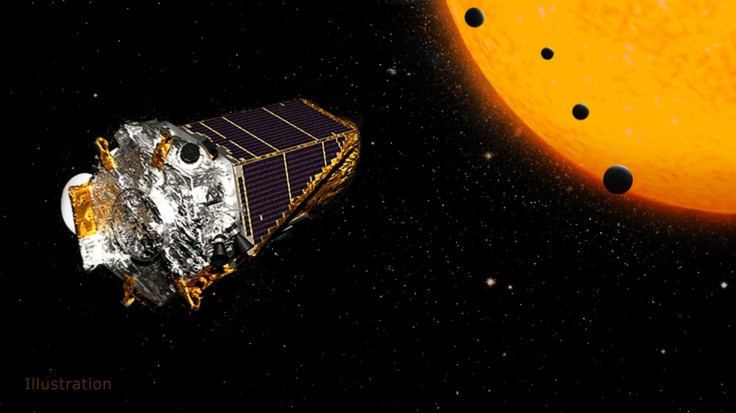NASA To Reveal Kepler Breakthrough: What Did Google AI Find?

NASA just announced a major teleconference Thursday and everyone following the space agency’s developments is excited. An official announcement on the NASA website said it is gearing up for a teleconference to reveal a major breakthrough made by the Kepler space telescope, which is currently hunting the universe for exoplanets.
The Friday release said the Kepler mission, NASA’s most prolific exoplanet finder in history, hit a major breakthrough with the help of artificial intelligence (AI).
The discovery used Google’s machine learning algorithms to possibly develop a new way of analyzing data from the Kepler spacecraft. Google’s machine learning approach to artificial intelligence is considered the world’s pioneering application in the field. The neural net-based service helps machines process information and extract their own findings from it, effectively learning from the result.
The space agency called for a press teleconference Thursday at 1 p.m. EST, which will be streamed live on NASA Live. The news release contained a briefing of the discovery, which mentioned Google’s AI was key to the findings.
Kepler was zooming around in our region of the Milky Way, providing scientists with information about the hundreds of small planets in a region of the galaxy that could possibly have planets capable of hosting life. Kepler is on a mission to study hot planets in a region that is estimated to have highest probability of a life-capable planet. It surveyed planets around stars classified as bright M-dwarfs in the neighborhood of sun. The majority of its time was spent in identifying and studying these potentially habitable bodies, their orbit around the star and the discovery of binary stars with open clusters.
According to the news release, Kepler helped the team at NASA make several discoveries before this.
“When Kepler launched in March 2009, scientists didn’t know how common planets were beyond our solar system. Thanks to Kepler’s treasure trove of discoveries, astronomers now believe there may be at least one planet orbiting every star in the sky,” the press release said.
In 2014, the spacecraft began a new extended mission called K2, which continues the search for exoplanets, while introducing new research opportunities to study young stars, supernovae and other cosmic phenomena, the release added.
The announcement will be attended by Paul Hertz, director of the Astrophysics Division at NASA’s Headquarters in Washington, and Kepler project scientist Jessie Dotson, from NASA’s Ames Research Center in Silicon Valley, California.
Since the discovery is fueled by Google AI’s immense data processing abilities, Christopher Shallue, senior software engineer at Google AI in Mountain View, California, and Andrew Vanderburg, astronomer and NASA Sagan Postdoctoral Fellow at the University of Texas, Austin, will be in attendance.
Most online reports and social media predictions claimed the announcement could be about a major exoplanet discovery, which is the primary mission directive of Kepler. This is seen as a major finding and people are encouraged to submit questions regarding the big disclosure or the role of AI in the Kepler mission during the conference on Twitter using the hashtag #askNASA.
The K2 mission represents a new chapter in the spacecraft's mission concept. The new operations enabled continued scientific observations with the Kepler space telescope. K2 became fully operational in May 2014 and is expected to continue operating until 2018. The exoplanets' discovered by K2 will be the targets for the Hubble Space Telescope and its successor, the forthcoming James Webb Space Telescope (JWST), to study their atmospheres in search of signs that might indicate life.
K2’s data helped astronomers rework their models for searching for exoplanets and the hot-Jupiter paradigm with the discovery of a star with a Jupiter-sized planet sandwiched between two smaller companion planets. K2 also discovered the rubble of a destroyed exoplanet orbiting a dead star known as a white dwarf. Exoplanets were long theorized to orbit these remnant stars, but K2 helped confirm it.
In the Kepler mission statement, NASA scientists say there is clear evidence for a substantial number of three types of exoplanets: gas giants, hot-super-Earths in short period orbits, and ice giants.
"The challenge now is to find terrestrial planets, especially those in the habitable zone of their stars where liquid water might exist on the surface of the planet," the team adds in the statement.
Last month, scientists analyzing Kepler data found 20 planets that could host life in the future. The space observatory also discovered Earth's potential twin, KOI 7711.01, slightly bigger than our home planet and receives the same amount of light that Earth gets from the sun.
© Copyright IBTimes 2024. All rights reserved.





















